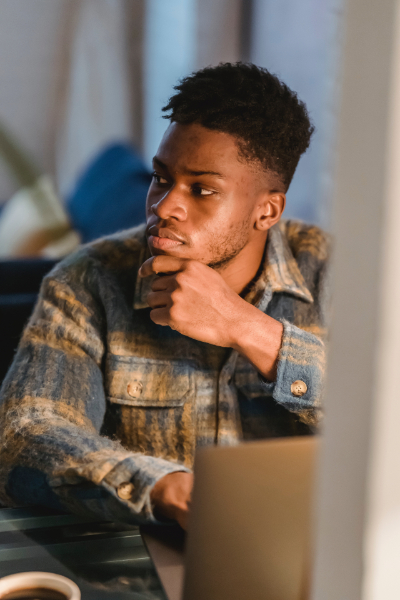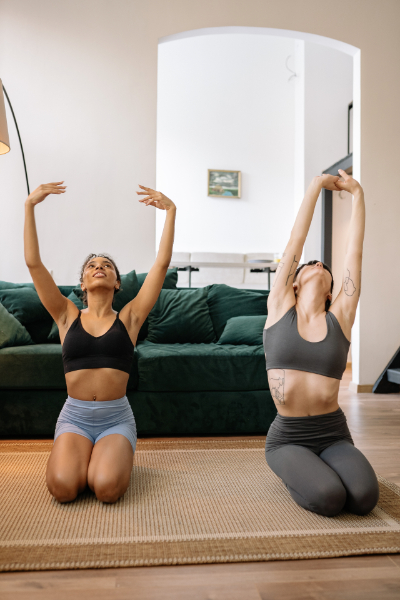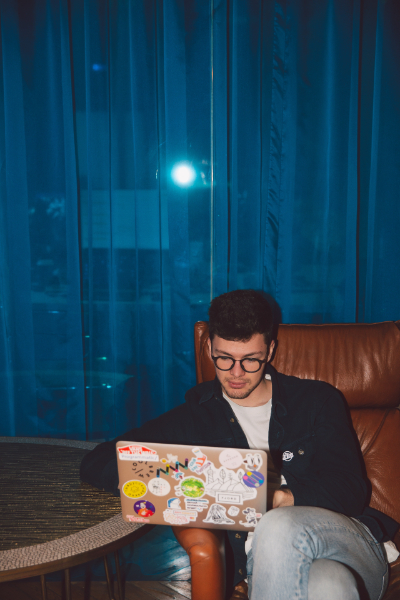
Tips & Tools
Managing your anxiety
Moving into the New Year Mindfully

With the new year here, we are all pushing to achieve our new years resolutions! If improving your health is on your list of new years resolutions, you need to read this blog - questions that are so helpful for supporting our mental health answered by one of our Cam's Kids experts; Zenia Mihevc. Zenia is a Registered Social Worker, offering counseling both in and out of the office through mindful movement, forest hikes and nature walks, as well as traditional talk psychotherapy.
 How can mindfulness help people who struggle with symptoms of anxiety?
How can mindfulness help people who struggle with symptoms of anxiety?
Mindfulness is being talked about in many parts of modern society these days. Big magazines and newspapers are writing about it, if you google the word mindfulness, there are over 4 million search responses. There are many books and podcasts dedicated to mindfulness. It’s kind of a big deal!
Despite our current modern fascination with mindfulness, it is an ancient Buddhist practice that was also practiced in the ancient Yogic traditions.
I would like to start by first stating what mindfulness is. There are many definitions of Mindfulness, I like to say that mindfulness is the intentional practice of paying attention and being aware of our moment-to-moment experiences of our emotions, thoughts and bodily sensations, without judgement.
When the body is in a stressed state, people often experience all their thoughts, feelings, and sensations in a way that seems heightened, and often overwhelming. The sympathetic nervous system kicks into high gear and sends messages to the brain that we are not safe. By practicing Mindfulness, we can learn how to create some distance between our thoughts, physical sensations and emotions which helps lower the intensity of the body’s reaction to stressful circumstances.
Our minds are busy. Full of thoughts leading us this way and that way. It can be overwhelming, confusing and often takes a lot out of us. Practicing mindfulness is a practice of paying attention. And it is just that… A Practice. The more we practice taking a pause to notice what is happening around us and within us, we are better equipped to understand what is nourishing us and what is depleting us.
What are some ways to incorporate mindfulness practices?
There are many ways to practice mindfulness. When I am working with people who struggle with anxiety, I like to begin by teaching them how to simply pause and notice. We often start by paying attention to our breath. Not with the intention of changing it, but first to get to know our breath.
Try this:
|
Stop whatever you are doing. Doing this practice builds our awareness of how our breath moves and we can use it as a “baseline” to see how our breath can change based on what’s happening around us or within us. |
 |
Other ways we can incorporate mindfulness into your daily life is by going through the 5 senses and ask yourself:
What are 5 things that I see?
What are 4 things that I feel?
What are 3 things that I hear?
What are 2 things that I smell?
What is 1 thing I can taste?
The practice of paying attention, roots us into the present moment and mindfully redirects our thoughts from future focused worries to the here and now.
My favourite way to engage in a formal practice is through mindful movement like yoga.
 How can people use yoga to combat symptoms of anxiety and burnout?
How can people use yoga to combat symptoms of anxiety and burnout?
When confronted with a stressor, mild or severe, our Sympathetic Nervous System will respond. This is a physiological response that all humans have.
In ancient times, when a human was confronted with a Sabre Tooth Tiger in the wild, the response of “fight, flight or freeze” would protect the human and give them the best odds of survival in that exact moment. This decision to fight, run or freeze is made in an ancient part of the brain. It is very primal.
When stress is presented to us, our physiological response goes into “Fight, Flight or Freeze'' mode. This is our Sympathetic Nervous System’s reaction.
When any level of stress hits us, we may retreat and curl up in a ball and binge Netflix. We may want to run away or remove ourselves from the situation and isolate. We may also become irritable and lash out or begin fights when we normally would not have.
In these current times, our Nervous Systems are overwhelmed, overburdened, and generally feeling attacked. Many of us are in a place of chronic stress and high anxiety which can lead to burn out.
Yoga can help soothe and regulate our nervous systems by activating the relaxation response through the vagus nerve – the nerve that helps control the parasympathetic nervous system (the one that supports rest and digest). The combination of the physical practice of yoga (Asanas) and breathwork (Pranayama) initiates a calming response in the nervous system.
The effects of yoga on anxiety can take time. Retraining your nervous system is like learning a new hobby. Your yoga practice does not have to be long but rather integrating a 10 minute practice more frequently can produce greater results than attending one 60-90 minute yoga class a week.
Not all yoga is the same. For many a gentle, slow restorative practice is highly effective when dealing with anxiety. However, others may need a more vigorous practice before they can settle into a slower practice and find relaxation. I always recommend you try a few different classes and approaches to see what works for you.
At A Little Zen, we practice a body-oriented trauma informed therapy approach to healing. Body-oriented trauma therapy is based on the concept that body and mind are one. And, as such, should not be treated independently of one another.
 What are some ways to incorporate mindfulness practices if we currently don't have money to afford these services?
What are some ways to incorporate mindfulness practices if we currently don't have money to afford these services?
The best way to start and maintain a mindfulness practice is to incorporate it into your daily routine. Between work, family, school, and other commitments, though, it can be tough for many people to find the time. Fortunately, many of the techniques can be practiced while you’re doing other things.
Tips for fitting mindful relaxation techniques into your life:
- If possible, schedule a set time to practice each day. Set aside one or two periods each day. You may find that it’s easier to stick with your practice if you do it first thing in the morning, before other tasks and responsibilities get in the way.
- Use natural transitions. After you finish a task, before moving on to the “next thing”, take a moment and check in with yourself. You can use a guided mindfulness practice, or simply connect with your breath as it is. Identify what you feel (physical sensations, breath) and how you feel (emotions). Then move on to the next task/thing.
- Practice relaxation techniques while you’re doing other things. Meditate while
commuting to work on a bus or train, or waiting for a dentist appointment. Try deep breathing while you’re doing housework or mowing the lawn. Mindfulness walking can be done while exercising your dog, walking to your car, or climbing the stairs at work instead of using the elevator. Once you’ve learned techniques such as tai chi, you can practice them in your office or in the park at lunchtime.
- If you exercise, improve the relaxation benefits by adopting mindfulness. Instead of zoning out or staring at a TV as you exercise, try focusing your attention on your body. If you’re resistance training, for example, focus on coordinating your breathing with your movements and pay attention to how your body feels as you raise and lower the weights.
- Avoid practicing when you’re sleepy. These techniques can relax you so much that they can make you very sleepy, especially if it’s close to bedtime. You will get the most benefit if you practice when you’re fully awake and alert. Do not practice after eating a heavy meal or while using drugs, tobacco, or alcohol.
- Expect ups and downs. Don’t be discouraged if you skip a few days or even a few weeks. It happens. Just get started again and slowly build up to your old momentum.
 |
To wrap up; happy 2023! Now go kick some butt achieving your new years resolutions. If you are feeling like you need further support or you have any questions please do not hesitate to reach out directly to Cam's Kids at [email protected] or submit annoymous question(s) to our Cam's Kids expert panel here. We would also like to thank our expert Zenia for providing us with fantastic answers that will allow all of us to move into the new year with great actions we can take now to support better coping with anxiety. When we learn to become more mindful, we will notice we are better able to cope with our anxiety, and even if this was not directly your goal for the new year it will make space for you to more easily achieve your goals now with anxiety not stopping you in your tracks.
Zenia Mihevc, MSW, RSW
306A - 2 Campbell Drive Uxbridge Ontario L9P 1H6
Phone: (905) 904-0398
Website: www.alittlezen.ca
- All
-
29 Nutrition
Nutrition
- 73 Mindfulness and Relaxation
- 27 Student Life
- 8 Exercise
- 51 Treatments & Therapies
- Anxiety Resources

Don't see what you're looking for? Send us an email!
©Copyright 2024 Cam’s Kids powered by Kids Help Phone
Not-for-Profit Organization. B/N: 921508-5
Thanks for visiting Cam's Kids. Please remember...
Cam's Kids is not a service provider.
If you are in crisis, please call 911 or go to your nearest emergency department. For free, confidential counselling, contact Good2Talk or Kids Help Phone.
Post-secondary students: find your local crisis resource here.

